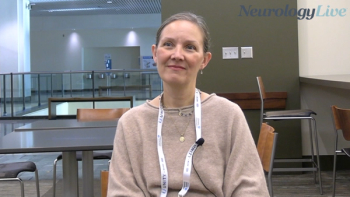
Quality of Life in Parkinson Disease Maintained After 5 Years of Subthalamic DBS
The study provided the first class IIb evidence of the long-term benefits of deep brain stimulation in patients with Parkinson disease, emphasized by improved quality of life and reduced medication requirements.
Newly published data from a nonrandomized controlled trial of patients with advanced Parkinson disease (PD) showed stable quality of life (QOL) 5 years after undergoing deep brain stimulation of the subthalamic nucleus (STN-DBS). The differences in QOL outcomes vs those on standard-of-care medication (MED) were mainly driven by favorable effects on mobility.1
The prospective, observational, quasi-experimental, longitudinal trial featured 108 patients with PD, 62 of which received STN-DBS and 46 to MED. Led by Stefanie Jost, PhD, a doctor of psychology at the University of Cologne, patients were assessed on several different outcomes, including Parkinson’s Disease Questionnaire 8 (PDQ-8), Unified PD Rating Scale (UPDRS)-motor examination, Scales for Outcomes in PD (SCOPA)-activities of daily living (ADL) and motor complications (M), and levodopa-equivalent daily dose (LEDD). At the final analysis, patients had a median disease duration of 7.7 (IQR, 5.5-13.0) years.
At the 5-year follow-up, patients in the MED group demonstrated significantly worsened QOL, as demonstrated by changes on PDQ-8 (–10.9; 95% CI, –19.0 to –2.7; P = .01). In contrast, those in the STN-DBS group showed stable QOL (change, –4.3; 95% CI, –13.2 to 4.7; P = .34), with a between-group difference 6.6 points in the mean change from baseline.
In comparison with the MED group, patients who received STN-DBS showed a favorable outcome on the PDQ mobility domain at 5-year follow-up (median difference in change scores, –1.0; 95% CI, –2.0 to 0; P = .03). The SCOPA-M total score, a well-established, validated short version of the UPDRS, worsened significantly by 19.5% in the MED group at 5 years (–4.5; 95% CI, –7.4 to –1.6; P = .008) whereas a 6.4% improvement in the STN-DBS group was statistically insignificant (SCOPA-M change, 1.9; 95% CI, –1.1 to 5.0; P = .20).
READ MORE:
In the STN-DBS group, the improvement of SCOPA-M total score was driven by a 47.1% improvement of motor complications (SCOPA-M motor complication change, –1.5; IQR, –2.5 to 0.0; P = .01). From baseline to 5-year follow-up, LEDD increased by 17.0% in the MED group 1 (LEDD change, –340.9; 95% CI, –521.7 to –160.1; P <.001) and decreased by 62.2% in the STN-DBS group (LEDD change, 617.0; 95% CI, 417.6-816.3; P <.001).
To the authors’ knowledge, this was the first report of class IIb evidence of beneficial long-term effects of STN-DBS on motor complications and medication requirements at 5-year follow-up. "The association between changes in QOL and ADL, but not motor impairment or complications, highlights the relative importance of ADL outcomes for long-term DBS assessments," Jost et al wrote. "These findings may provide helpful information when counseling patients on the efficacy of STN-DBS for PD and monitoring patients postoperatively in long-term follow-up."
The total electrical energy delivered (TEED), a secondary outcome, was calculated using an established method by Koss et al, assuming a standard impedance of 1000Ω. Overall, in the STN-DBS group, the mean TEED was 53.4 (SD, 34.1) μJ/s at 1-year follow-up and 102.1 (SD, 67.6) μJ/s at 5-year follow-up. From the 1- to 5-year time point, the TEED increased by 91.0%.
In terms of safety, investigators recorded 39 serious adverse events (AEs) in 17 patients who underwent STN-DBS. All of these were resolved without major sequelae except for 1 patient, who underwent surgical colostomy for ileus. Of these serious AEs, 13 were categorized as surgical or device related, 8 as neurologic, 7 as psychiatric, and 11 as other reasons. In the cohort, results showed 2.33 neurologic AEs per year, 0.43 psychiatric AEs per year, 0.10 surgical and device-related AEs per year, and 0.38 other AEs per year.
REFERENCE
1. Jost ST, Aloui S, Evans J, et al. Neurostimulation for advanced Parkinson disease and quality of life at 5 years: a nonrandomized controlled trial. JAMA Netw Open. 2024;7(1):e2352177. doi:10.1001/jamanetworkopen.2023.52177
Newsletter
Keep your finger on the pulse of neurology—subscribe to NeurologyLive for expert interviews, new data, and breakthrough treatment updates.


































